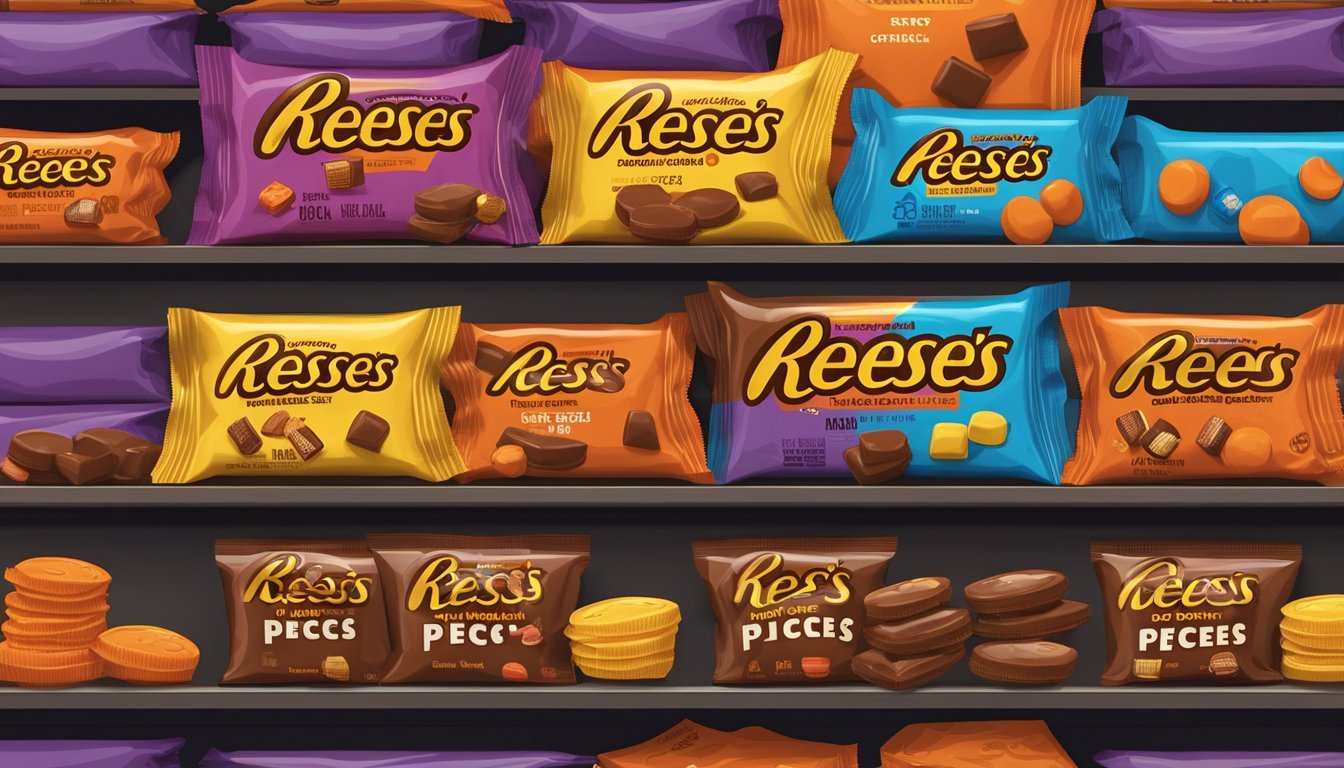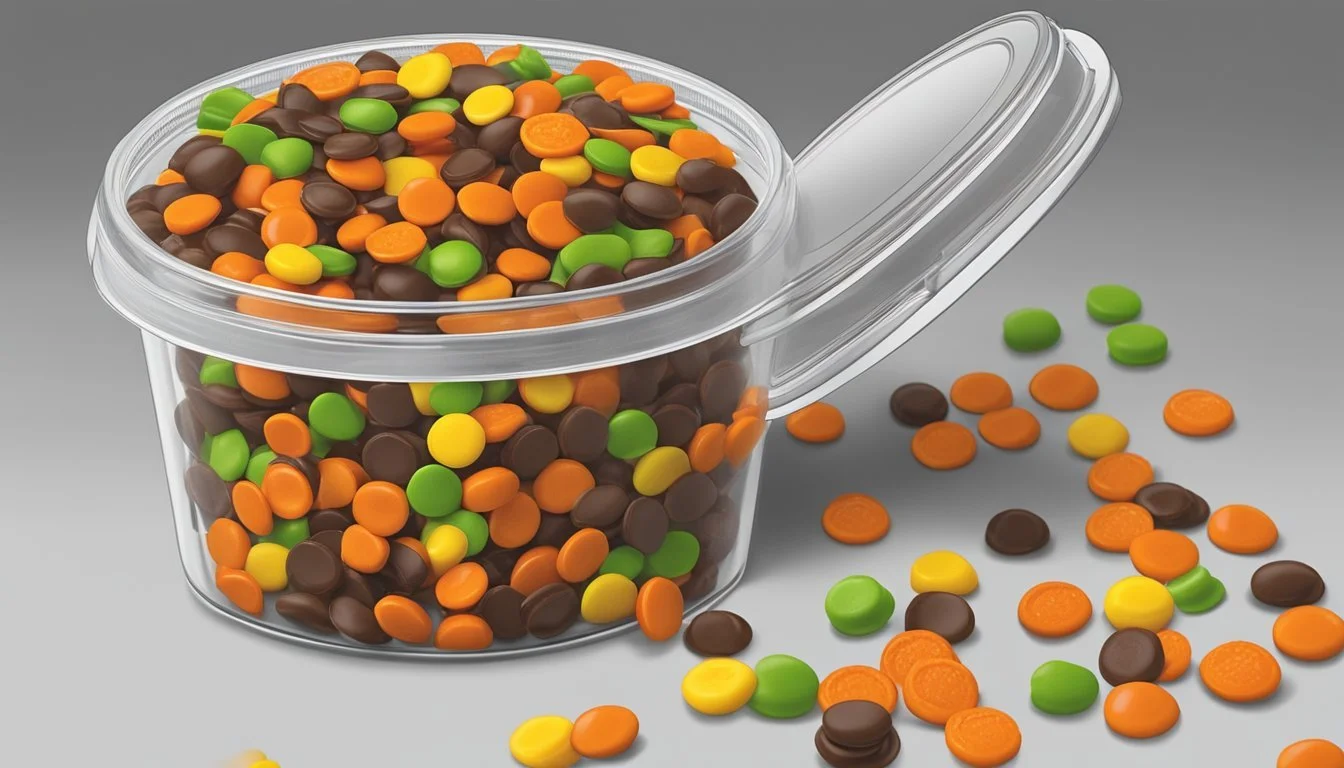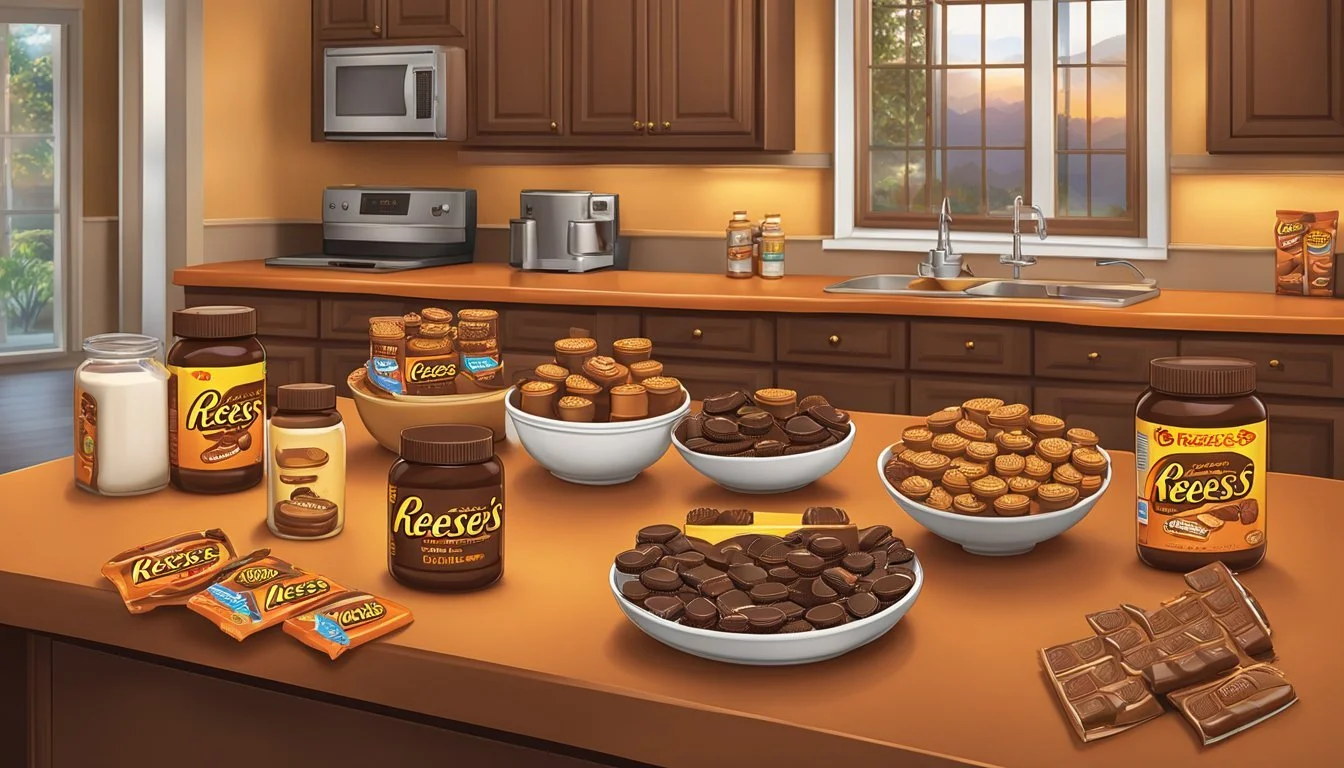How Long Do Reese's Pieces Last?
Understanding Their Shelf Life
Reese's Pieces, with their signature combination of creamy peanut butter encased in a crisp candy shell, have become a beloved treat for chocolate and candy enthusiasts. Understanding the shelf life of these sweets is essential for those looking to enjoy them at their peak quality. Typically, unopened Reese's Pieces can remain fresh for up to 18 months beyond their best by date when stored properly.
Once opened, the shelf life of Reese's Pieces can be expected to last up to 6 months provided they are kept in a cool, dry environment. Factors such as exposure to high temperatures or humidity can accelerate the degradation of quality, potentially leading to stale or less flavorful candy. It is the encapsulation of the peanut butter filling within the candy shell that can help to preserve its taste and texture over time.
For optimal storage, it is advisable to keep Reese's Pieces away from direct sunlight and heat sources. Those looking to extend their shelf life beyond the usual parameters may consider refrigeration or freezing, which can efficiently prolong freshness. It is, however, important to note that the texture of the peanut butter may change when Reese's Pieces are kept in the freezer, which could affect the overall experience when consuming the candy after thawing.
Understanding Reese's Pieces
Reese's Pieces, a popular candy produced by The Hershey Company, offer a unique taste experience combining peanut butter and a crunchy shell. The candy is notably small in size and comes in various colors including orange, yellow, and brown. These colors are designed to attract consumers and distinguish the product on shelves.
Composition:
Shell: A hard panned shell with a glossy finish.
Filling: A smooth, creamy peanut butter center.
Flavor Profile:
Chocolate: While they do not contain milk chocolate, the combination of flavors mimics a chocolatey essence.
Peanut Butter: The distinct taste of peanut butter is the central flavor note.
Nutritional Content:
Sugar (how long does sugar last?): As with many candies, Reese's Pieces have a high sugar content, contributing to the overall taste profile.
Reese's Pieces have remained a staple in the confectionery world since their introduction. Part of their staying power likely ties to their role in popular culture, such as their appearance in the film "E.T. the Extra-Terrestrial." Beyond movies, the candy's consistent quality and the reputation of The Hershey Company for creating enjoyable products contribute to its enduring popularity.
While Mars, Inc., another leading candy manufacturer, offers similar products, Reese's Pieces stand out due to their specific peanut butter filling that's different from usual chocolate-associated treats. The combination of taste, texture, and marketing strategies keeps Reese's Pieces a beloved candy across generations.
Proper Storage Practices
The longevity of Reese's Pieces considerably relies on adhering to proper storage methods. Here, we outline the most efficient strategies for keeping Reese’s Pieces fresh, covering everything from pantry storage to understanding spoilage indicators.
Pantry Storage
Reese’s Pieces should be stored in a cool, dry pantry. Keeping them away from heat and light will help maintain their flavor and prevent the chocolate from melting. The pantry should ideally be at a consistent temperature to keep the candy at peak freshness.
Refrigeration and Freezing
Fridge: Storing these candies in a fridge can extend their freshness up to 10 months. They must be sealed properly to avoid absorbing odors.
Freezer: For long-term storage, Reese’s Pieces can last up to 2 years in the freezer if unopened or sealed well.
Optimal Conditions for Freshness
Optimal freshness is achieved in dark, cool, and dry conditions. Maintaining a consistent temperature and humidity level is key. Reese’s Pieces should not be stored with items that might transfer strong odors.
Signs of Spoilage
Spoilage can be detected through changes in:
Smell: Any off or stale odors should be taken as a warning sign.
Appearance: Discoloration or the presence of mold indicates that the candy should not be consumed.
Best Practices for Bulk Purchases
When buying in bulk, it's important to:
Store in an airtight container or sealed bags.
Divide into smaller portions to maintain freshness for longer periods when accessing the storage place.
Impact of External Factors on Shelf Life
External factors such as temperature, humidity, and moisture have a direct impact on shelf life. Exposure to high temperatures or humidity can lead to a faster degradation of quality, with the candy potentially becoming unfit for consumption due to melting or sugar content degradation.
Health and Nutrition Information
When consuming Reese's Pieces, it is important for individuals to be aware of the candy's nutritional content, potential allergens, and any dietary considerations associated with its consumption.
Caloric and Sugar Content
Reese's Pieces are high in calories and sugar, with a serving size of 38 pieces (approximately 30 grams) containing around 140 to 150 calories. The same serving size also includes about 16 grams of sugar, which constitutes a significant portion of the recommended daily intake, particularly for those monitoring sugar consumption due to health concerns such as weight gain or type 2 diabetes.
Allergens and Dietary Considerations
Allergies are an important consideration when consuming Reese's Pieces. They contain peanuts, one of the most common allergens, making them unsuitable for individuals with peanut or nut allergies. They are gluten-free, catering to those with gluten sensitivities or celiac disease. However, Reese's Pieces are not suitable for vegans or people who are lactose intolerant due to the presence of dairy-related ingredients.
Nutritional Benefits and Concerns
While Reese's Pieces provide a small amount of protein and fat, they have a high saturated fat content, which can be a concern for individuals with health issues such as high blood pressure, and should be consumed in moderation. The candies lack substantial amounts of vitamins, minerals, and omega-3 fatty acids, thus they do not significantly contribute to nutrition. Frequent consumption of high-sugar candies like Reese's Pieces may not support a nutritious diet and should be balanced with healthier food choices.
Shelf Life and Expiration
Reese's Pieces, the peanut butter candy encased in a crunchy shell, has a definitive shelf life influenced by storage conditions and whether the package is open or sealed. This section will guide you through understanding and maximizing the longevity of Reese's Pieces.
Determining The Shelf Life
The shelf life of Reese's Pieces can vary significantly based on storage conditions. Typically, unopened and stored in a cool, dry environment, Reese's Pieces last up to 18 months beyond their best by date. It's essential to note the expiration date as a safety guideline, though the candy often remains safe to eat beyond this period.
The Impact of Opening on Freshness
Once opened, Reese's Pieces are susceptible to loss of freshness. If kept in an airtight container and placed in a cool, dry area, their quality can be preserved for about 6 months. Post this period, the product may experience a change in texture and flavor due to exposure to air and moisture.
How to Extend Reese's Pieces Longevity
Storing Reese's Pieces in the fridge can prolong their freshness for up to 10 months after opening. For maximum extension, freezing them is an excellent option, as Reese's Pieces maintain quality for 1 to 2 years in the freezer when unopened.
Expiration Date vs. Best By Date
Understanding labeling is crucial for candy lifespan. The best by date indicates the timeframe for optimal quality, while the expiration date refers to the last day the product is deemed safe for consumption under proper storage conditions. Reese's Pieces are generally consumable past the best by date, especially if not compromised by heat or moisture.
Safety Concerns
When it comes to Reese's Pieces, understanding the signs of spoilage and proper storage protocols is crucial for safe consumption.
Identifying Unsafe Candies
One must be vigilant in identifying spoilt candies. Here are key indicators:
Mold Presence: Visible molds or discoloration indicate contamination.
Off Smell: A rancid or unusual odor suggests spoilage.
Taste: If the flavor is off or unpleasant, the candy may be unsafe.
Consumption of spoiled candies could expose one to harmful bacteria or mold, escalating the risk of foodborne illnesses like salmonella.
Keeping Reese's Pieces Safe to Eat
Adhering to optimal storage conditions is imperative for extending the shelf life of Reese's Pieces and keeping them safe:
Cool Conditions: Store them in a cool, dry place away from direct sunlight.
Sealed Containers: Airtight containers reduce oxidation and maintain freshness.
Refrigeration: Keeping them refrigerated can extend their shelf life up to 10 months.
Freezing: For long-term preservation, freezing can keep them edible for 1 to 2 years.
It is important to note that improper storage could lead to the candy becoming rancid or developing mold, which renders it unsafe for consumption.
Enhancing the Reese's Experience
To fully appreciate Reese's confectionery, one can explore new ways to savor its flavor and texture, incorporate it into various treats, and discover complimentary pairings to elevate the taste experience.
Taste and Texture Enhancement
The signature taste of Reese's Pieces, characterized by the salty-sweet peanut butter filling and the crunchy hard candy shell, can be enhanced by ensuring they are consumed at an optimal temperature. When stored in a cool and dry place, their texture is maintained, but some connoisseurs prefer to refrigerate Reese's Pieces briefly for a firmer bite. Freezing is another option, which provides a unique texture, although one should be cautious as this can lead to the peanut butter filling becoming too hard.
Creative Uses for Reese's Pieces
Reese's Pieces lend themselves to a variety of creative culinary applications that go well beyond straight-out-of-the-bag snacking. They can be:
Used as a colorful topping for ice cream and yogurt parfaits
Incorporated into homemade trail mix with nuts and other candies for a flavorful snack
Mixed into batters for cookies or brownies for added texture and flavor bursts
Used as a decoration on cakes or cupcakes, playing off their bright colors and rich taste
These applications not only utilize the delightful peanut butter and milk chocolate flavor but also bring a playful texture that complements many desserts and snacks.
Pairing Suggestions
Pairing Reese's Pieces with beverages or other confections can accentuate their flavor profile. Here are selected pairings to consider:
Milk: A classic choice that complements the milk chocolate component of Reese's Pieces for a harmonious taste.
Mint tea or specialty coffee: Can contrast the sweetness of the candies for a refreshing palate experience.
Dark chocolate: For those favoring a less sweet option, dark chocolate provides a rich backdrop that lets the taste of Reese's Pieces stand out.
When selecting pairings, it's important to consider the balance of flavors to ensure that neither overpowers the other, allowing Reese's Pieces to remain the star of the show.
Ingredient Insights
Reese's Pieces are known for their unique flavor, which comes from a combination of key ingredients and additives including oils, sweeteners, and colors. Understanding these ingredients can shed light on the product's shelf life and quality.
Key Ingredients of Reese's Pieces
Reese's Pieces consist of a peanut butter filling surrounded by a candy shell. The main ingredients typically include sugar, which provides sweetness, dextrose, a form of glucose, and hydrogenated vegetable oil such as palm kernel oil and soybean oil, which contribute to the candy's texture.
Milk Chocolate: Although Reese's Pieces primarily contain a peanut butter filling, milk chocolate is a fundamental component in the Reese family of candies.
Cocoa Beans: As a basis for chocolate, cocoa beans are an essential ingredient in many confectioneries, imparting a deep, rich flavor.
Additives and Colors
To enhance the appearance and shelf life of Reese's Pieces, various additives and artificial colors are used.
Red 40, Yellow 6, Blue 1: These are common FDA-approved food colorings used to create the vibrant orange, yellow, and brown hues of Reese's Pieces.
Vanillin: An artificial flavor, vanillin is used to imitate the flavor of vanilla in many processed foods.
Trans Fat and Hydrogenated Oils
Trans fats are often a byproduct of hydrogenation, which is used to increase shelf life and stabilize flavor.
Hydrogenated Oils: While providing a desirable texture, these oils can contain trans fats, which are associated with health risks.
Palm Kernel and Soybean Oils: They are hydrogenated to solidify at room temperature, increasing the product's stability.
In conclusion, Reese's Pieces are crafted from a combination of sweet, rich flavors and colors, with a texture owed to hydrogenated oils. Ingredient composition plays a vital role in both the taste experience and the product's longevity.
Production and Manufacturing
In the production of Reese's Pieces, meticulous procedures are employed to ensure consistent quality, from the initial stages of manufacturing to the comprehensive quality checks. The Hersey Company's history of confectionery expertise underpins this process.
Production Process of Reese's Pieces
Reese's Pieces are produced by The Hershey Company using a specific method that involves creating the candy's center, which consists of a smooth peanut butter filling. The filling is shaped using molds to achieve the candy's iconic oblate spheroid shape. Once formed, the centers are coated with a thin candy shell through a panning process, where layers of color are added before being polished to a shine.
Quality Control in Candy Making
During production, quality control is paramount to ensure that Reese's Pieces maintain the high standards associated with The Hershey Company. This includes inspecting the candies for uniform size and color. Advanced monitoring systems are in place to detect any deviations from the desired product specifications, and comprehensive quality checks are conducted throughout the manufacturing process.
The Hershey Company Background
Founded in 1894, The Hershey Company has grown to become one of the most recognized names in the candy industry. The company has established a robust production infrastructure that allows for the high-volume output of Reese's Pieces while adhering to stringent quality guidelines. Their commitment to maintaining a consistent and high-quality product has solidified Hershey's position in the market and trademarked innovations, such as the distinctive packaging of Hershey's Kisses, demonstrate their industry influence.
Buying Guide
When purchasing Reese's Pieces, the buyer's focus should be on identifying the freshest product to ensure the best taste and texture experience. The following guidelines provide a straightforward approach to selecting quality candies.
Selecting Quality Reese's Pieces
Appearance: A fresh pack of Reese's Pieces should have vibrant, uniform color without any discoloration. Pieces with dull or inconsistent color may indicate age or poor storage conditions.
Texture: The candy shell of Reese's Pieces should be smooth and intact. Cracks or stickiness often suggest that the product has been exposed to fluctuating temperatures or is past its prime.
Flavor: While it's not possible to taste the product before buying, one can check the expiration date as a proxy for flavor quality. Reese's Pieces well before their 'best by' date are more likely to retain the characteristic peanut butter flavor.
Freshness: The freshness of Reese's Pieces can be inferred from the packaging integrity. Packaging should be sealed tightly with no holes, tears, or dents. The 'best by' or 'expiration date' should be checked to ensure that the product is within the optimal consumption window.
By carefully evaluating these factors, consumers can confidently select the best product available.










